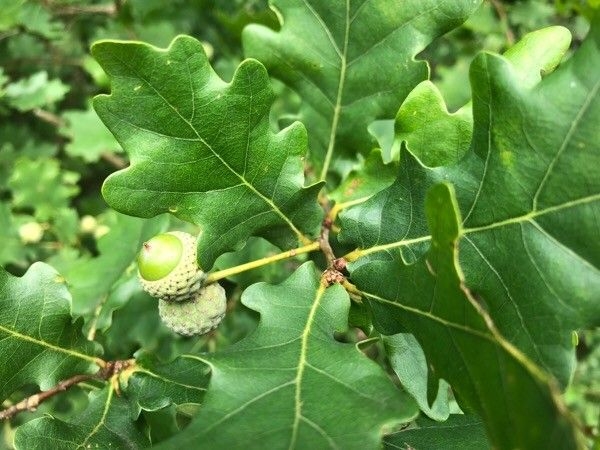English Oak
(Quercus robur)
English Oak (Quercus robur)
/
/

Jef Charles
CC BY-SA 4.0














































































Estimated Native Range
Summary
The English Oak is valued for its majestic appearance, dense canopy, and historical significance. It is often used in large landscapes, parks, and as a heritage tree in gardens. It provides habitat and food for a wide range of wildlife. This oak prefers full sun but is adaptable to a variety of soil conditions, though it thrives best in well-drained loamy soils. It is relatively low-maintenance once established but can be susceptible to oak wilt and powdery mildew. Due to its potential invasiveness, caution is advised when planting Quercus robur outside its native range.CC BY-SA 4.0
Plant Description
- Plant Type: Tree
- Height: 40-70 feet
- Width: 35-50 feet
- Growth Rate: Slow
- Flower Color: N/A
- Flowering Season: Spring
- Leaf Retention: Deciduous
Growth Requirements
- Sun: Full Sun, Part Shade
- Water: Medium
- Drainage: Fast, Medium
Common Uses
Bee Garden, Bird Garden, Butterfly Garden, Deer Resistant, Drought Tolerant, Edible*Disclaimer: Easyscape's listed plant edibility is for informational use. Always verify the safety and proper identification of any plant before consumption., Fire Resistant, Low Maintenance, Rabbit Resistant, Salt Tolerant, Street Planting
Natural Habitat
Deciduous forests, mixed woodlands, and hedgerows
Other Names
Common Names: Pedunculate Oak, European Oak, Stilk-Eg, Stiel-Eiche, Stieleiche, Chêne Pédonculé, Zomereik, Pelarek, Skogsek, Dub ČErešČAtyj
Scientific Names: , Quercus robur, Quercus tristis, Quercus similata, Quercus scotica, Quercus pectinata, Quercus robur subsp. longipeduncula, Quercus concordia, Quercus hodginsii, Quercus robur f. pendula
GBIF Accepted Name: Quercus robur L.